Treating against varroa: the basics
The objective of varroa treatments is not only to control the infestation and avoid the consequences on the colony. But also to limit the pressure and sanitary impact of the parasite on neighboring apiaries and the bee population.
All colonies in the same apiary must be treated at the same time, and neighboring apiaries should also be treated.
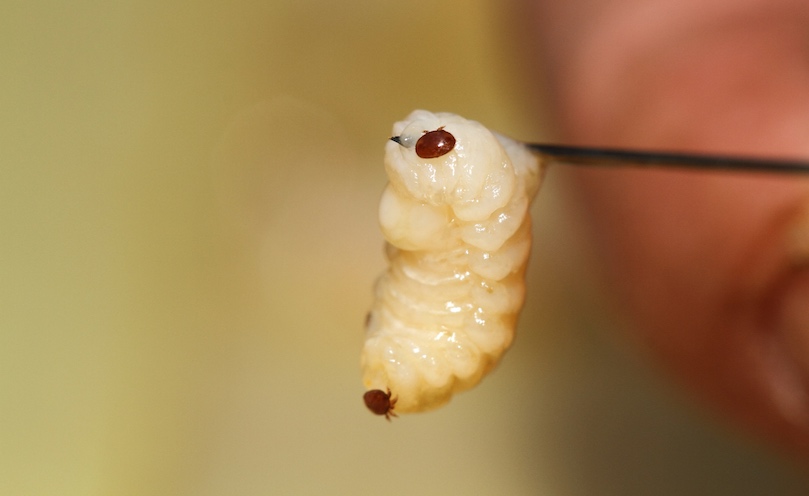
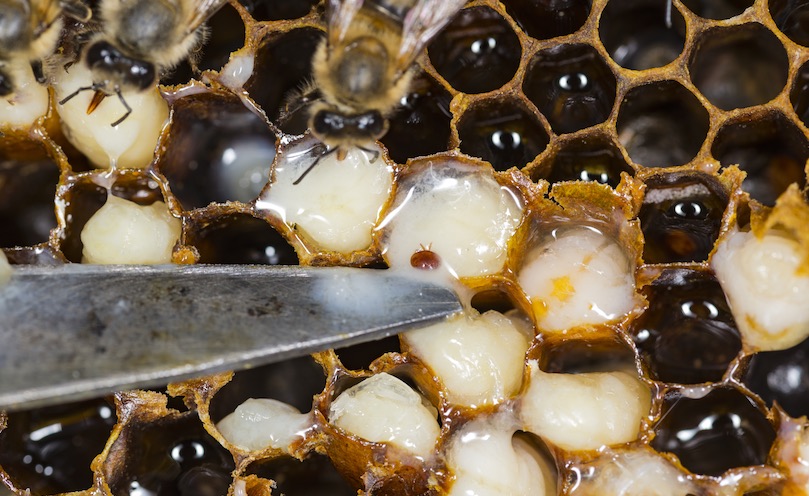
Using an authorized treatment for bees
The treatments used must have an authorization for use in honey bee hives, which guarantees safety for the colonies, for the hive products (including honey), and for the user and his environment.
Always make sure you read the instructions and precautions for use to ensure that you apply the right dosage and are aware of the conditions of use (temperatures, ventilation, withdrawal period, etc.).
The varroa population is growing at an exponential rate.
Every month it doubles.1 Therefore it is important not to rely solely on a late-season treatment.
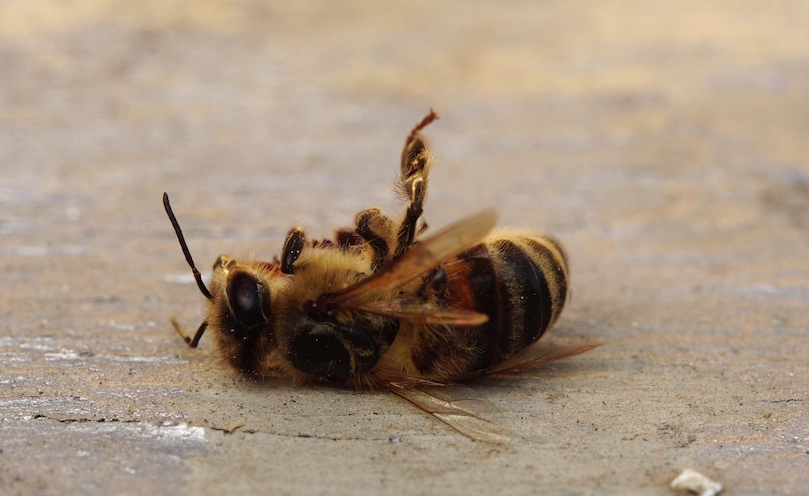
Late treatment = increased winter losses
With heavy infestations, the later the treatment, the longer the period during which varroa mites can reproduce and cause damage to the colony.2
Such a late treatment will make it difficult to eliminate the parasite and will not reduce the effects of varroa mites on individual bees and the colony in time. Treating early in the season can decrease winter mortality and help prepare the bees for a good spring build-up.2
Forget the “1 treatment per year on the same date” strategy
Although it is tempting to approach varroa control in a routine manner, limiting oneself to “one treatment at the same time every year” is a dangerous strategy.
The influence of environmental factors (including temperatures3) and selected bee breeds4 on the development of varroa mites in colonies is often overlooked. The trend is moving towards years with brood being present in the colonies for longer, and therefore infestations prove to be increasingly difficult to manage. It is therefore impractical to rely on and repeat a single treatment strategy every year.
It is crucial to anticipate monitoring early in the season to know where you stand, and to possibly implement emergency measures when your hives exceed infestation thresholds.
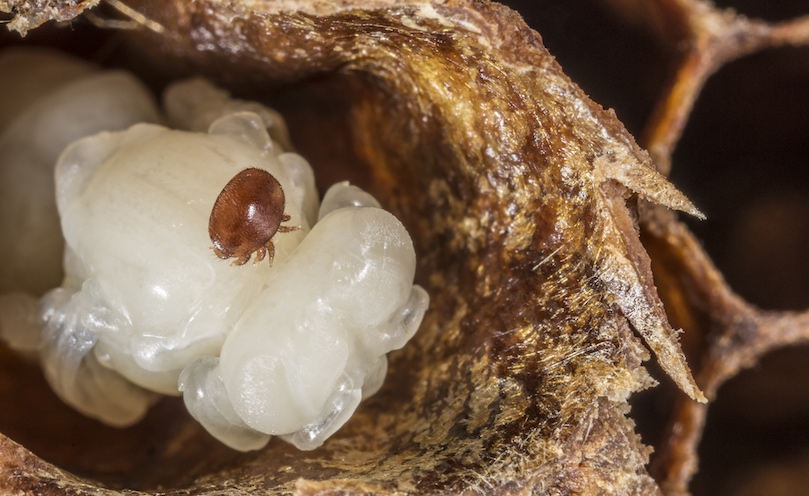
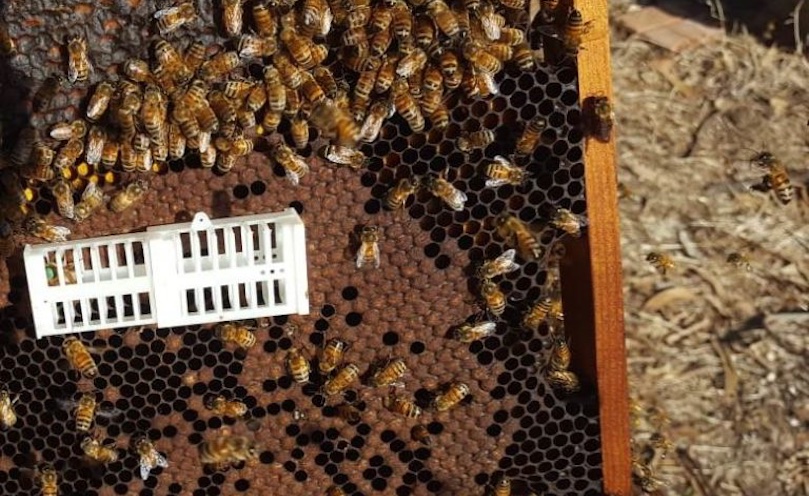
Combining treatments and biomechanical methods
Faced with the growing varroa pressure to which colonies are subjected, it is increasingly interesting to combine biomechanical methods with medical treatments to build a control strategy:
Removal of male brood (trapping or destruction), splitting colonies, or queen caging.
These methods make it possible to use a “flash” treatment during the beekeeping season to lower the infestation and delay the application of the next treatment.
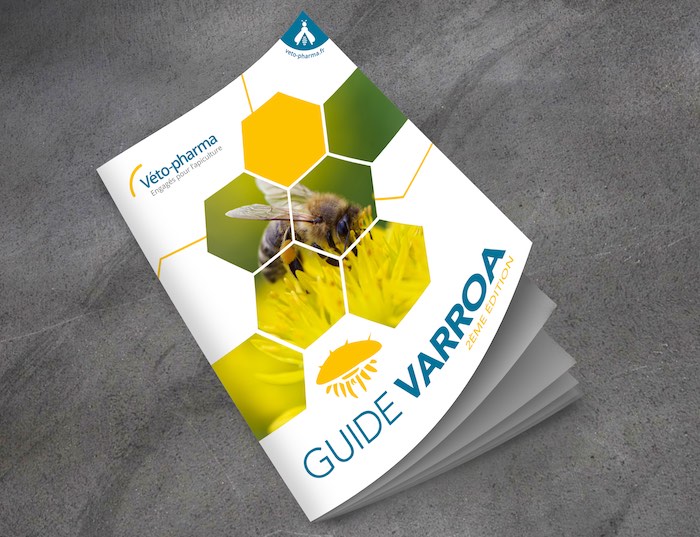
A popular guide for beekeepers summarizing all the information about varroa mites: biology, mite monitoring and treatment strategy.
References
1- Marwan Keshlaf, Hamida B. Mirwan – Population Dynamics of Varroa Mites and Bee Lice in Honey Bees Colonies – University of Tripoli, Faculty of Agriculture – 2018
2- https://www.adage.adafrance.org/downloads/documents%20ressources/2020_synthese_enquetes_printemps_2020_grand_est_vfinale.pdf
According to a survey conducted each year in Eastern France, the later the treatment is applied, the higher the winter losses. Study conducted in 2020 on more than 29,000 hives.
3- Poonia, Asha & Gulati, Rachna & Sharma, S.K.. (2014). Effect of environmental factors on the population of Varroa destructor in Apis mellifera l. Colonies. The eCOSCAN.
https://www.researchgate.net/profile/Asha-Poonia/publication/281587411
The varroa population was significantly positively correlated with maximum (r = 0.659) and minimum (r = 0.648) temperature.
4- Smoliński, S., Langowska, A. & Glazaczow, A. Raised seasonal temperatures reinforce autumn Varroa destructor infestation in honey bee colonies. Sci Rep11, 22256 (2021).
https://doi.org/10.1038/s41598-021-01369-1
Statistically significant difference (p = 0.039) between Caucasian and Buckfast bees.
VTP-75-EX-N02-02/22
